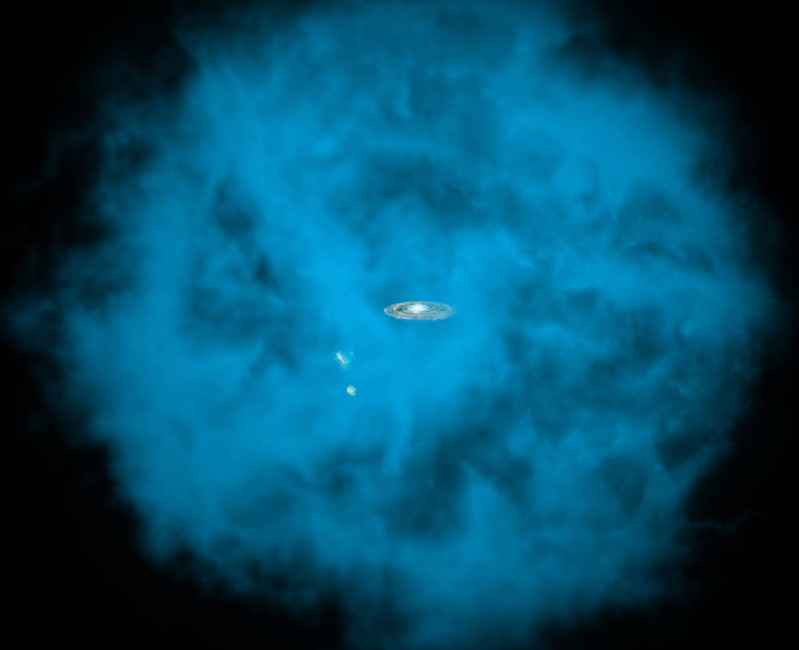
 Credit: NASA/CXC/M.Weiss/Ohio State/A Gupta et al
Credit: NASA/CXC/M.Weiss/Ohio State/A Gupta et al
Spinning Hot Halo
We think galaxies may form through the accretion of huge amounts of matter from the intergalactic medium. As this matter falls together and accelerates, portions of it will collide, heating the gas to temperatures of millions of degrees. The combination of the total amount of matter accreted, its density, and its spin, helps determine the type of galaxy that's produced, whether spiral, elliptical, or irregular. After the galaxy is formed, the accreting gas that is left over forms a hot, large, massive halo around the galaxy. These halos are expected to be much larger than the galaxy, and very tenous, so it's difficult to directly detect them. But all our observations of external galaxies are seen through the halo surrounding the Milky Way, shown as the blue haze in the illustration above. Using the XMM-Newton X-ray Observatory, astronomers have been able to detect how the Milky Way's hot halo absorbs X-rays emitted from a selection of X-ray bright external galaxies distributed around the sky. By determining the Doppler motion of the Milky Way's halo through measuring the wavelengths of specific X-ray absorption features produced by atoms of oxygen in the halo, astronomers have revealed the motion of this hot gas. This study shows that the halo rotates at a remarkable speed of roughly 400,000 miles per hour, so that the spin of the halo is comparable to the spin of the Milky Way itself.
Published: August 1, 2016
<
HEA Dictionary ● Archive
● Search HEAPOW
● Other Languages
● HEAPOW on Facebook
● Download all Images
● Education ● HEAD
>

Each week the HEASARC
brings you new, exciting and beautiful images from X-ray and Gamma ray
astronomy. Check back each week and be sure to check out the HEAPOW archive!
Page Author: Dr. Michael F. Corcoran
Last modified Tuesday, 27-Feb-2024 10:06:48 EST


